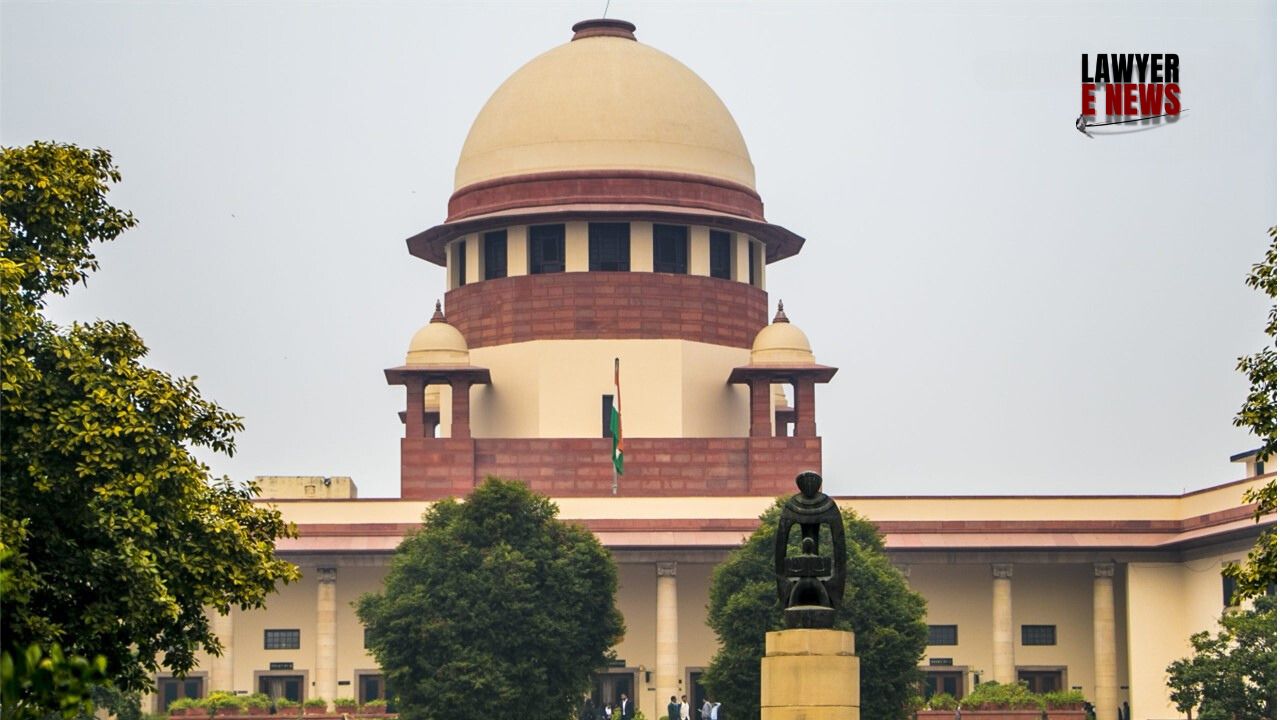-
by Admin
17 December 2025 8:55 AM



In a crucial ruling, the Supreme Court has acquitted Akula Raghuram, who had been convicted under Section 366A IPC for allegedly abducting a minor girl. The Court found that the prosecution failed to establish that the victim was a minor at the time of the alleged incident, a crucial requirement for invoking the provision.
"A conviction cannot stand on assumptions and medical approximations when the law demands proof beyond reasonable doubt," observed the Bench of Justice B.R. Gavai and Justice K. Vinod Chandran, setting aside the conviction and directing that the accused be acquitted.
The case dates back to May 3, 2001, when the appellant was accused of forcing the victim into a jeep and taking her to multiple locations within Andhra Pradesh, intending to marry her. The girl returned home after two months and lodged a complaint, leading to an FIR at Atchampet Police Station under Section 366A IPC, which penalizes the abduction of a minor girl with the intent of subjecting her to illicit intercourse.
The trial court convicted the accused, and the Revisional Court upheld the conviction, reasoning that the accused had taken the girl from the lawful custody of her parents and that his intention to marry her implied a likelihood of sexual intercourse. The accused challenged the verdict before the Supreme Court, arguing that there was no evidence to prove that the victim was a minor at the time of the alleged abduction.
"Age Cannot Be Assumed – It Must Be Proven With Conclusive Evidence"
The Supreme Court scrutinized the evidence and found serious deficiencies in the prosecution's case, particularly on the victim’s age, which was central to the charge under Section 366A IPC.
"The prosecution must prove, beyond reasonable doubt, that the victim was below 18 years of age. Without a birth certificate, school records, or other concrete proof, the case cannot rest on mere medical opinion," the Court stated.
The medical report, which estimated the victim’s age to be between 16 and 17 years, was found unreliable. The Court noted that ossification tests can have a margin of error of up to two years, meaning the victim could well have been 18 at the time of the incident. The radiologist who conducted the tests was not examined, and his report was not marked in evidence, further weakening the prosecution's case.
"Age determination through medical examination is not conclusive proof. When the difference of even a few months could determine whether an offence is made out, the court cannot rely on estimations and probability," the Bench observed.
"When the Victim Herself Raises Doubts, the Conviction Cannot Stand"
The Supreme Court found contradictions in the victim’s testimony, which further undermined the prosecution’s case. She initially claimed that she was forcibly taken in a jeep, but later admitted that she did not resist at multiple points, despite having opportunities to escape.
"Her conduct raises serious doubts about whether she was forcibly taken at all. If she truly feared for her safety, why did she not attempt to flee when left alone in public spaces?" the Court questioned.
The Court also took note of the victim’s inconsistent statements about her relationship with the accused. At one point, she stated that she was not acquainted with him before the incident, but later admitted that their families had been close and that he had previously expressed a desire to marry her.
"Eyewitness Testimony Cannot Be a Mere Formality – It Must Inspire Confidence"
The prosecution relied on an eyewitness (PW-3) who allegedly saw the abduction. However, the Supreme Court found his testimony unconvincing, as he failed to identify either the accused or the jeep in which the victim was allegedly taken.
"If an eyewitness does not even recognize the accused or the vehicle involved, what value does such testimony hold?" the Court remarked.
The mechanic (PW-8), who was supposed to confirm the seizure of the vehicle, turned hostile, further weakening the link between the accused and the alleged crime.
"Criminal Convictions Must Rest on Certainty, Not Speculation"
The Supreme Court held that the Revisional Court had erred in upholding the conviction without addressing the glaring inconsistencies in the prosecution's case. The lack of conclusive proof on the victim’s age, the contradictions in her testimony, and the weak eyewitness accounts all led the Bench to acquit the accused.
"When the prosecution itself is unsure about fundamental facts, the benefit of doubt must go to the accused. Criminal convictions must rest on certainty, not speculation," the Court ruled.
The conviction was set aside, the accused was acquitted, and his bail bonds were cancelled. The Supreme Court also disposed of all pending applications related to the case.
"The law does not allow a person to be convicted on mere probabilities. The prosecution's inability to establish the victim’s age with certainty is a fatal flaw in this case," the judgment concluded.
"A Ruling That Reinforces the Fundamental Principle of Criminal Law – Proof Beyond Doubt"
The judgment serves as a strong precedent on the necessity of proving a victim’s age conclusively in cases under Section 366A IPC. It reaffirms that medical approximations are not enough and that birth certificates, school records, or parental testimony are essential to establish minority.
The ruling also underscores the importance of credible and consistent evidence, sending a clear message that convictions cannot rest on assumptions, contradictions, or unreliable witnesses.
"In a criminal trial, the accused is entitled to the presumption of innocence until proven guilty beyond all reasonable doubt. This case reminds us that justice demands certainty, not convenience," the Supreme Court concluded.
Date of decision: 11/02/2025
